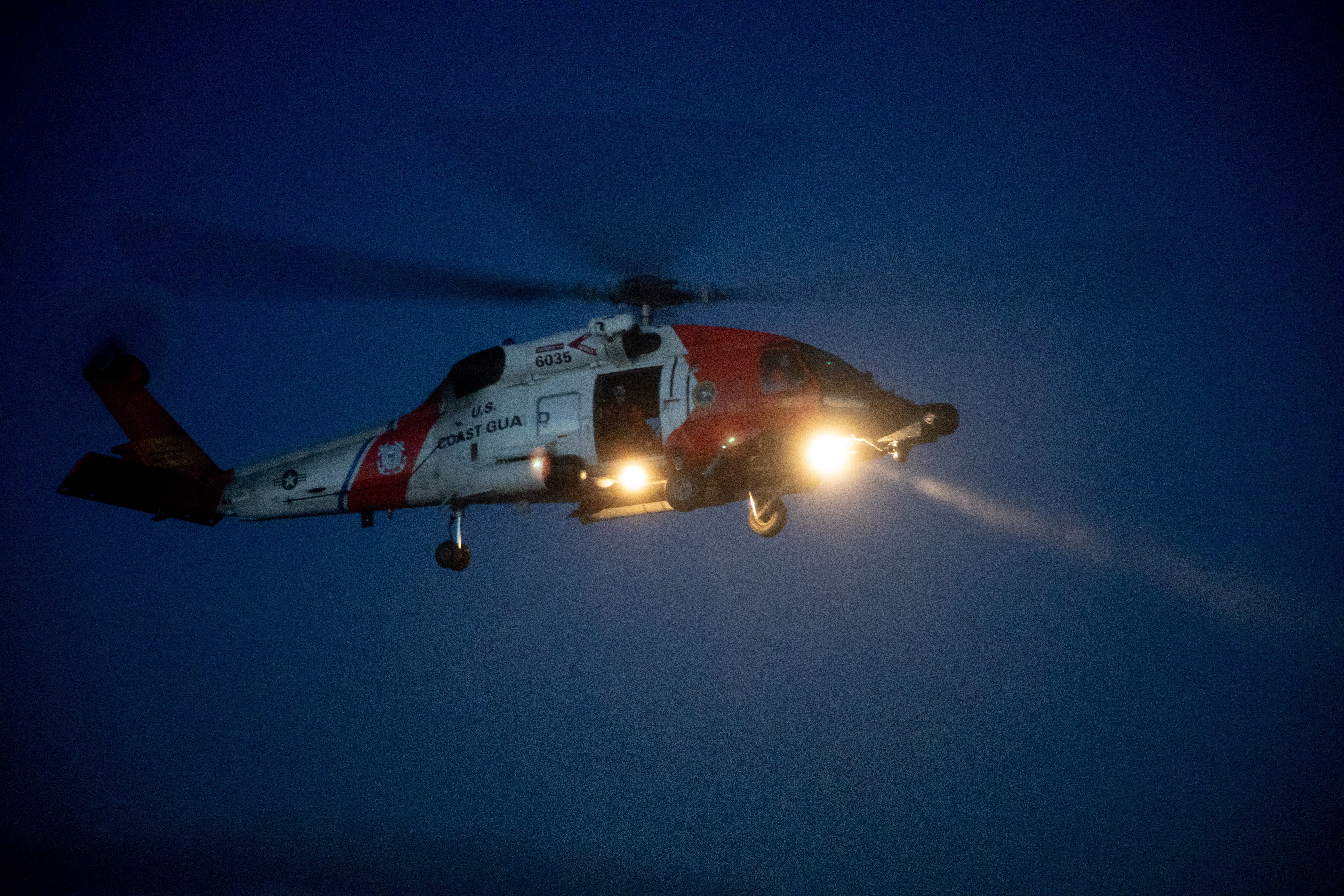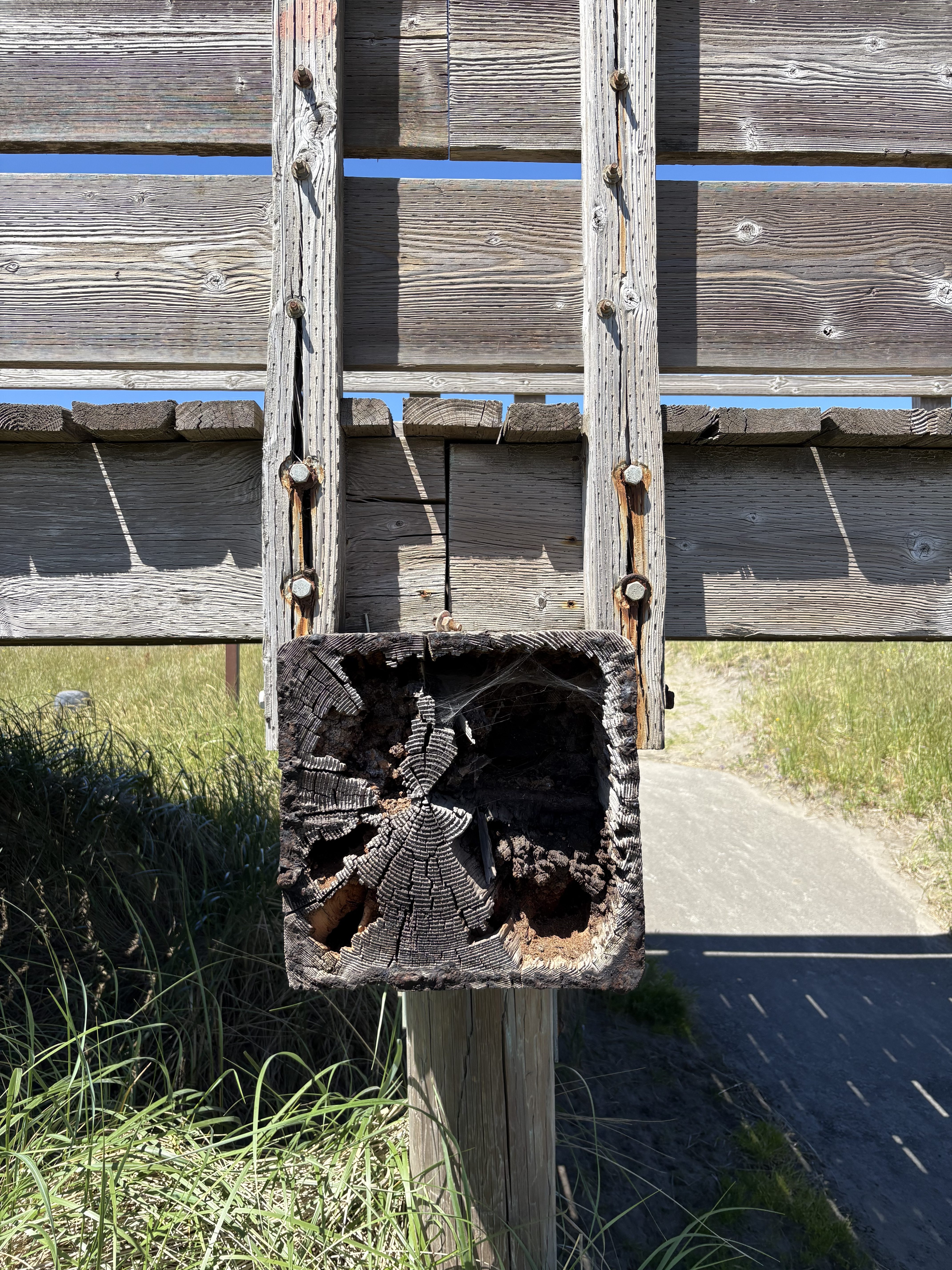A whale of an event
Published 5:00 pm Tuesday, October 10, 2006

- <I>KEVIN HEIMBIGNER photo</I><BR>Carson Kemmer of Ocean Park did some close-up whale watching Thursday morning.
PENINSULA – “Big,” was the conclusion of the little girl bundled up in a pink-hooded jacket peaking from behind the safety of her mother’s legs as she inspected the massive bulk of the humpback whale which washed up on a Peninsula beach in Klipsan last Wednesday, Oct. 4.
Trending
The whale, a mature 50-foot humpback female, certainly was. But the little girl had nothing to fear. The whale had probably been dead for a few days before the stranding, but even when alive, humpbacks have a reputation as being “gentle giants.”
For most people, this stranding would be the only chance to see a humpback whale aside from television programs or pictures – to take in the leviathan’s impressive size. For days, images of the whale were broadcast over the evening news, reporters diligently tracking the progress of the necropsy and burial. Realizing the rarity of the event, people came in droves, and for a variety of reasons.
“It was pretty incredible,” said Dyanna Lambourn, wildlife biologist with the Washington Department of Fish and Wildlife. She was in charge of coordinating the necropsy, trying to discover why the whale had died.
Trending
Usually, she works with pinnipeds, seals and sea lions. The whale was first spotted offshore while her agency was doing an aerial survey for seals Wednesday morning, and was quickly followed by at least four reports from citizens. By afternoon the whale had reached the shore.
Scientists rush to the sceneShe and a group of scientists rushed to the scene. One of those groups was from Cascadia Research, a non-profit scientific and educational organization based in Olympia.
According to John Calambokidis, principle investigator and co-founder of Cascadia Research, the advanced decomposition of the whale made it difficult to determine why she died.
“We don’t have a cause of death and may never get one,” he said.
But still, they were able to draw some conclusions. “We try to collect as much from the animal as we can,” said Lambourn. They don’t believe she was hit by a boat, or attacked by predators such as orcas. They could tell she was a mature female. She was not pregnant or nursing a calf.
They also could tell she had been feeding before she died and had a good weight, probably 30 to 40 tons. They collected biopsies to check for contaminants such as pesticides, diseases and for genetic comparisons, hoping to pinpoint which pod or family group she was from originally. Lambourn said full analysis of the samples could take up to a month. They took pictures of her.
Lambourn said they were working against the clock. “We didn’t have a whole lot of time,” she said. In addition to fighting the tide, as the days passed the stench from the whale became worse and worse. The carcass would have to be disposed of before it became a health hazard.
But still the people kept coming, curious to see firsthand. Immersed in her work and inside a cordoned off protected area, Lambourn didn’t realize at first just how many. “I didn’t notice the crowd until we were done,” she said.
Diverse crowd comes to see the whaleThey came in busloads, literally – school buses packed with children, clam diggers who had come down for the clam tide, artists, photographers, the young and old. Even the burial, which was finished on Monday, brought people out to watch, perhaps hoping for a repeat of the notorious “whale explosion” disposal technique.
“It was quite the ordeal,” said Kim Jardine with Gove Construction in Ocean Park. They were hired by the Washington Department of Parks and Recreation to remove the whale from the beach, which is Parks property.
Jardine said it took 13 hours to complete the task, with the whale divided up and buried in five different sites. “It was terrible,” she said. The whale’s mass, she said, strained even their heavy equipment.
During that time, the people’s responses varied from the solemn to the bizarre.
At one point, said Jardine, a group of five “devil worshipers,” dressed all in black and carrying “ninja swords,” arrived. Apparently, they equated trying to attack a dead whale with slaying a dragon … which is odd, because the whale was not alive to slay and not a reptile. The group was sent away by law enforcement.
Other people had more benign intentions. Jardine said there were many who came to pay their respects, honoring the passing of a majestic and endangered animal. Some wept at the sight, others left flowers and feathers on the gravesite.
“It had a dignity,” said Jardine. “What came from the earth should be returned to the earth.”
Unusual for a humpy to wash upContrary to the convictions of the hopeful dragonslayers, whales are mammals, warm-blooded animals which breath air and give birth to live young, just like people.
Bruce Mate, with the Oregon State University, is one of the foremost authorities on whales. He has also worked in coordination with Cascadia Research. He has spent decades learning about these mysterious animals, photographing them, watching their behavior, tagging them and monitoring their movements.
“It’s unusual,” he said of the humpback. Humpbacks tend to feed further off shore, about 20 miles, he said, so are less likely to wash up, instead they simply sink into the deep.
Humpbacks make one of the longest migrations of any animal. In the Pacific, they feed off the Alaskan Coast, then make their to either Hawaii or down the coast to as far away as Costa Rica.
Although estimates vary, there are about 2,000 humpbacks in the Pacific group, with about 200 feeding off the coast of Washington. Worldwide, there are probably about 7,500 individuals. They are considered endangered.
“The Pacific population is doing fairly well,” said Mate.
That wasn’t always the case. Prior to 1900, the Pacific population was estimated at about 15,000, then they were decimated by whaling. By 1964, when a ban on whaling was adopted, their numbers had dropped to fewer than 1,000.
Mate said there are things people can do to ensure the continued survival of the species just in everyday life. “Things as simple as not littering,” he said. All the pollutants and litter make their way to the ocean eventually, degrading the environment, poisoning or killing off humpback’s food source of krill and small fish.
“If you like whales,” he said, “don’t degrade the food chain. Be responsible citizens of the world.”









